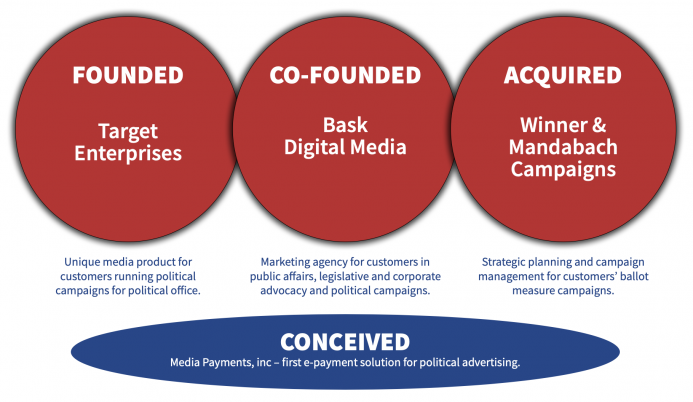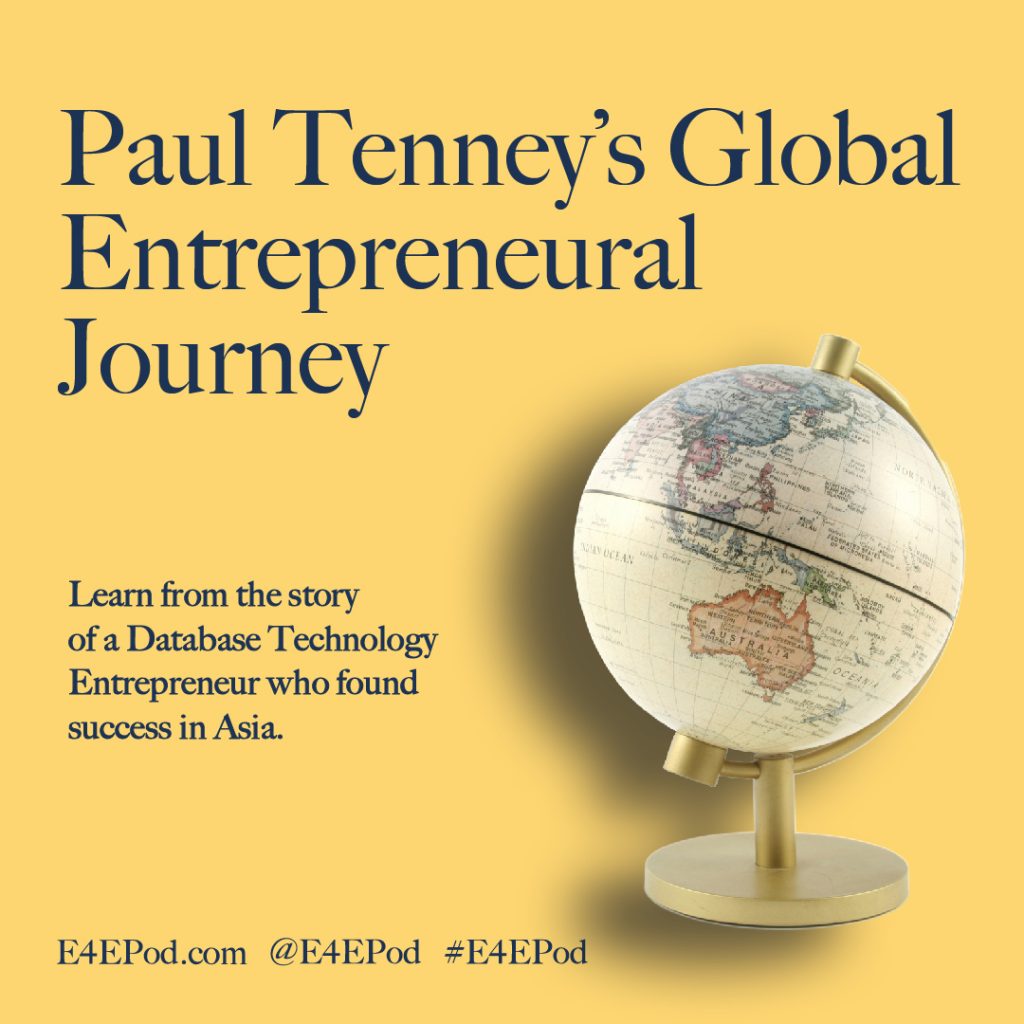79. Steven Phelan on the Many Different Entrepreneurial Journeys
Steve Phelan has spent a lifetime in entrepreneurship, as a student, a researcher, a teacher, an investor, an innovator and a practitioner. He found that people today — especially young people — are over-focused on the Silicon Valley / Venture Capital / Become A Billionaire model. That’s pretty rare (and may not even be a good model).
He decided, therefore, to classify all the different kinds and flavors of entrepreneurship, to help people think through all the business and lifestyle options. The result is a book called Startup Stories: Lessons For Everyday Entrepreneurs. It’s full of interesting personal interviews and experiences, analysis, data and insights. We’ve drafted a summary of the six levels of entrepreneurship Steven identified below, and in this downloadable Knowledge Map.
Key Takeaways and Actionable Insights
Level 1: The Personal Entrepreneur
We’re all capable of entrepreneurial behavior because we all have resources: our brain, our body, and our time. If we apply those resources to pursue valuable experiences for others and ourselves, we are personal entrepreneurs.
A career entrepreneur is one who takes personal responsibility as the custodian of their own human capital — the economic value we derive from our own stock of personality traits, knowledge, skills and experience, all of which can be developed. Career entrepreneurs invest in their own human capital and chart a path through life to achieve the highest long term return. Personal responsibility lies at the heart of entrepreneurship.
Being an intrapreneur is another way to exercise personal entrepreneurship. An intrapreneur is an employee who acts entrepreneurially — identifying customers’ desired experiences, designing innovative services and introducing new offerings into the market. While the incentives may be lower-powered than for entrepreneurs, they can nevertheless be attractive in the form of bonuses and stock options. It’s a good route to fulfillment for many.
Level 2: The Nascent Entrepreneur
This is the more conventional classification of an entrepreneur starting a business. An embryonic entrepreneur’s business is pre-revenue. They’re engaged in the exciting phase of customer discovery — which can include value proposition development, securing funding, hiring initial employees, assembling a team, planning launch activities, assembling resources, and testing prototypes. They key is action: ideas are plentiful, action is scarce. Embryonic entrepreneurs are action-oriented doers.
Emerging entrepreneurs’ businesses are post-revenue, pre-profit — they are pursuing a scalable and profitable business model. By definition, this stage is temporary — the emerging firm is designed to search for that sustainable model. Constant tweaking and experimenting is the dominant mode. Eventually, emerging entrepreneurs become growth entrepreneurs.
Level 3: The Lifestyle Entrepreneur
Entrepreneurship is a lifestyle choice for many — often driven by the desire for autonomy: to personally direct how to work and how to live. One form of lifestyle entrepreneur that Steven identifies is the craft entrepreneur.
Craft entrepreneurs have a highly developed individual talent, skill or expertise and they find a way to capitalize it and apply it entrepreneurially in the marketplace. They’re always trying to improve the quality of their product or service, and to reinforce their own mastery. If they can add some sales and marketing hustle, business can be very good.
A 21st Century version of the craft entrepreneur is the virtual entrepreneur. This is an individual, team or small business that takes advantage of the modern day digital-driven opportunity to interconnect, build online supply chains and download infrastructure. A virtual entrepreneur can run a business from anywhere where they can connect a device with a screen to the internet. There are plenty of challenges — especially in the fragility of the supply chain and finding trusted partners, but many profitable businesses follow this model.
Level 4: The Employer Entrepreneur
There is a major change in responsibilities, operations, management and personal experience when an entrepreneur takes on employees. Startup Stories explores two examples: family business owners and small business owners.
Family business owners have the advantage of built in trust and loyalty with their employees, which can result in greater stability. However, it may come with more complexity and tensions in inter-family member relationships.
Small business owners who are employers must delegate some authority and decision-making to employees, and therefore must become experts in identifying, hiring, managing and nurturing. Hiring employees can take your business to a new higher level, but poorly managed employees can damage your business in areas like lost productivity or damage to brand and business reputation. Successful small business entrepreneurs must overcome these challenges.
Level 5: The Growth Entrepreneur
Growth entrepreneurs experience the exhilaration of escaping the confines of small business. They can also start thinking about becoming rich if they can sustain the growth. Expansionary entrepreneurs expand to multiple locations, or multiple products line, or to millions of customers on the internet. There are plenty of challenges with managing growth — it may require business model revision; it may consume cash at such a rate that finance management becomes a problem; it may require continual organizational revisions. It can be personally exhausting, as Steve depicts in one of his interviews. But it can also be tremendously rewarding.
Gazelle entrepreneurs, in Steven’s terminology, are those growth entrepreneurs who take venture capital funding to boost growth rates and business acceleration. VC funding enables firms to fly faster and higher. Venture capital is rare and hard to get. It can also be destructive, especially to founders who can lose control of their companies (Steve explained how in the book). Term sheets set up these potentials. Securing venture capital is an exciting and energizing moment and a milestone of achievement. It’s important to read the fine print and think ahead!
Level 6: Super Entrepreneurs
This is the peak of the profession. Steve picks out Mavericks and Heroes. The discussion about mavericks is structured around the question: “Are entrepreneurs born or made?” Researchers have tried to establish whether or not there is an entrepreneurial personality, but the consensus is that there are no common traits that predict entrepreneurial success. But some personality traits may be more common in the entrepreneurial community than outside it. The maverick personality is one of them — willing to think and act differently from others, to pursue a distinctive imagination, to bet on a hunch. And the good news is that personality traits are not fixed — habits and behaviors can be acquired over time, through acting and learning. Entrepreneurs are made through action.
The second classification of Super Entrepreneurs that Steven considers are Hero Entrepreneurs. He makes the link between hero status and PR, and from there to the power of heroes to raise funding. It is possible to craft a hero persona, shaping the perception of others through “impression management”.
At E4E, we believe all entrepreneurs are economic heroes. They aim to better the lives of others, bringing new product and services to the market and responding to the preferences of customers based on their positive or negative response. They sacrifice in the short term, while designing their new solutions, in order to benefit in the long term if they serve customers well. This short term sacrifice for long term gain is not only economic, it’s the essence pf morality. We aim to continue to serve this community of heroes.
Free Downloads & Extras From The Episode
Six Levels of Entrepreneurship: Download Knowledge Map
“The Austrian Business Model” (video): https://e4epod.com/model
Start Your Own Entrepreneurial Journey
Ready to put Austrian Economics knowledge from the podcast to work for your business? Start your own entrepreneurial journey.



